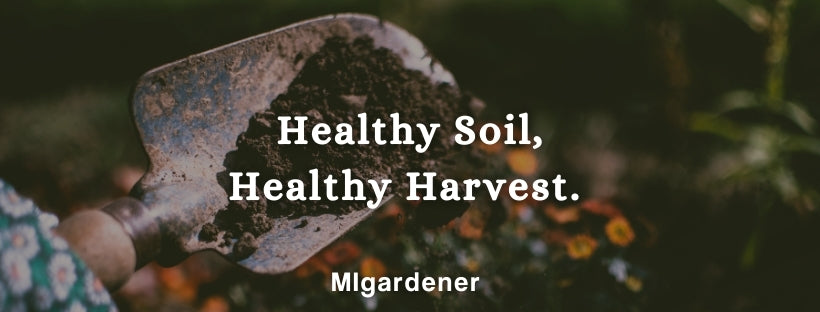
These Healthy Soil Tips Will Triple Your Harvest
Soil is the foundation for all life on Earth. Under your feet is this symbiotic network made up of tens of thousands of species that aid the biodiverse ecosystem that we rely on to produce vegetation. Head out to your garden and pick up a handful of soil. When you do you are not only able to see the insects and earthworms that are visible to the human eye, you are also holding onto different species of microorganisms, fungi, and algae. All together they bring the soil to life. As you learn the importance and the functionality of your soil contents, you too will think of the term DIRT as a curse word. Dirt is the lifeless version of soil. We first need to nurture our soil that will in turn nurture our plants, providing us with an abundant harvest! No matter where we are in our gardening journey, we can all benefit from learning about soil science.
Soil Test
Think of a soil test as a 'garden playbook'. You wouldn't go into a big meeting or a game as a coach without a playbook, we can translate that same scenario into the garden. Why are my plants not growing to the size I expected? Why is my garden full of pests? Why can I not get a hold of these weeds? All of these questions, and more, have plagued us at one time or another. Getting your soil tested will help you create an offensive position to not only prevent these problems but to help manage them if they are to occur. The best advice would be to contact your local extension office to obtain a soil sample kit. After collecting your soil you will send it off for testing. You do have the option to perform your own soil test at home but you will gain a small glimpse into the bigger picture. Start your season on the right foot by getting a full breakdown! Another resource available if you are unable to reach your local extension office is the regional soil testing lab. Home tests will tell you your soil's acidity (ph) levels, while a full test will list the nutrients, organic matter, and fertilizer recommendations for your area. Some varieties require higher ph (tomatoes) and some a lower acidity (potatoes). Add vinegar, diluted sulfur, or peat moss to add acidity to the soil or compost or limestone to lower the ph. Compost is often the answer to acidity level issues. Compost has the perfect level ph to provide a baseline for any garden. When in doubt, add compost.
Four Elements Of Healthy Soil
1. Minerals
Minerals are weathered rocks broken down by nature over time. These inorganic soil particles are put into categories by size; sand (large particles), silt (medium particles), and clay (small particles). The ratio of these will determine your soil's drainage, texture, and water retention capacity. Different varieties of plants require different soil textures. For example, carrots love growing in loose, sandy soil to grow long, straight roots. To plan each garden bed's texture, consider the root structure of the varieties you want to plant and amend each bed accordingly.
4. Organic Matter
Organic matter, delicately put, is made of things that were once alive. Plants, insects, animals, and microorganisms all decompose eventually to create nutrient-rich humus. Humus makes nutrients accessible to the plants in your garden. Nutrients like nitrogen, phosphorus, and potassium all break down in the decomposition process to become available for your plants. Micronutrients such as manganese and zinc can also be provided by compost.
2. Water + Air
Soil texture and compaction are both closely linked with the soil's access to hydration and aeration. If your soil contains high levels of clay, it will be difficult for the roots of your plants to grow. Roots do more than anchor your plant to the ground. Roots create tunnels in the soil which provide access to air and water which both assist in their ability to uptake nutrients simultaneously. To provide an ideal growth environment, designate walking paths in-between garden beds, use hand tools instead of tilling, and add compost to the soil.
4. Protect Precious Topsoil
The first few inches of topsoil in the garden often contain the most nutrients. Topsoil is the mineral layer containing phosphorus, magnesium, calcium, and many more vital ingredients that promote plant growth. These nutrients are easily depleted by contact with the elements. To protect topsoil from wind, sun, and water damage, add a layer of mulch around your plants. Be sure to avoid using any material that might be treated with harsh chemicals. As the mulch decomposed, it will add an extra dose of nutrients to the soil. Mulch will also minimize the time you spend weeding in the garden!
– Kaitlynn from MIgardener
Resources:
Did you enjoy this post? MIgardener is passionate about sharing free gardening tips and information! If you are looking for inspiration in the garden, make sure to check out our Pinterest page. Check us out at MIgardener.com or on youtube, Instagram, and Facebook.





Leave a comment